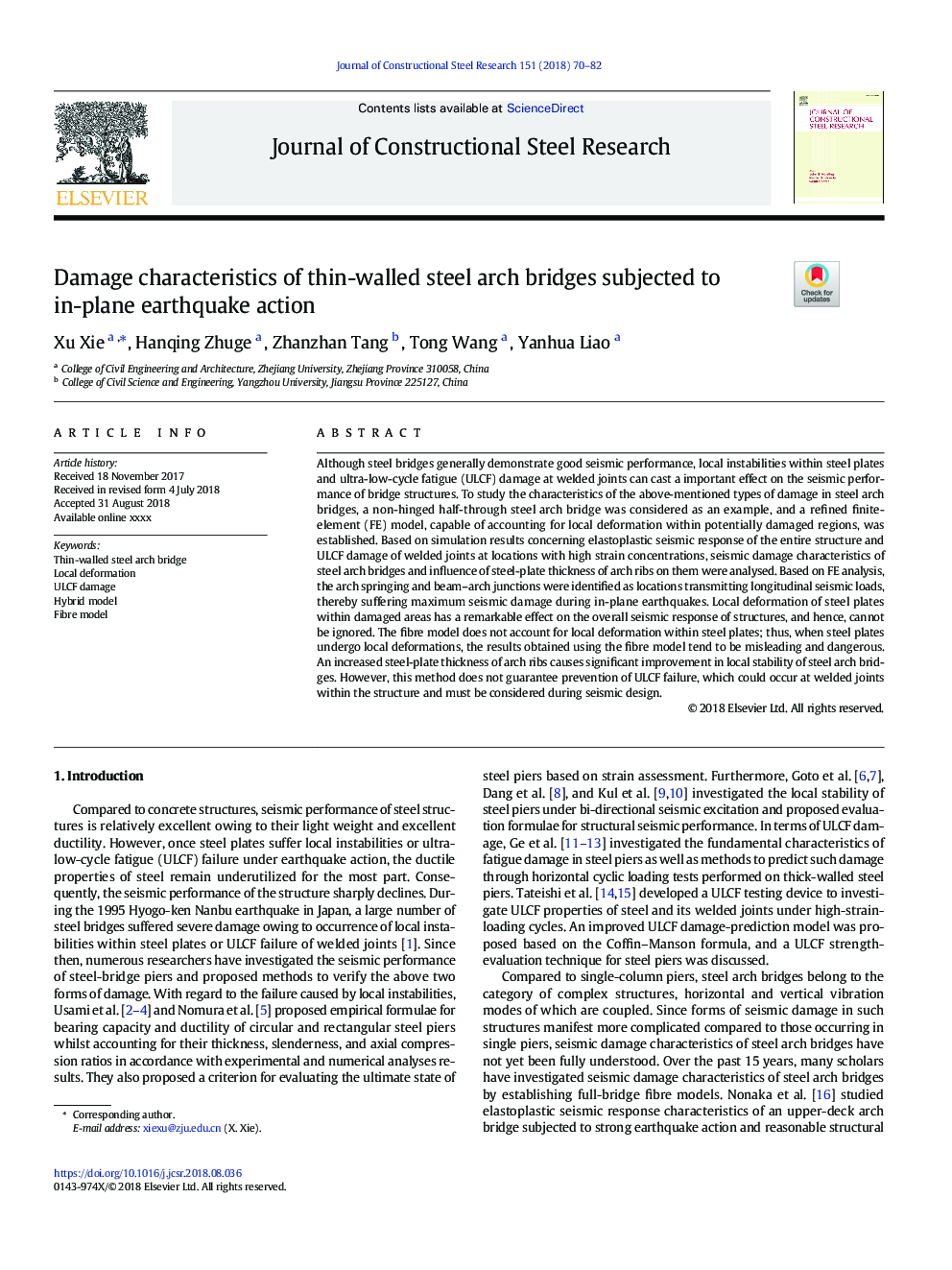| Article ID | Journal | Published Year | Pages | File Type |
|---|---|---|---|---|
| 10225404 | Journal of Constructional Steel Research | 2018 | 13 Pages |
Abstract
Although steel bridges generally demonstrate good seismic performance, local instabilities within steel plates and ultra-low-cycle fatigue (ULCF) damage at welded joints can cast a important effect on the seismic performance of bridge structures. To study the characteristics of the above-mentioned types of damage in steel arch bridges, a non-hinged half-through steel arch bridge was considered as an example, and a refined finite-element (FE) model, capable of accounting for local deformation within potentially damaged regions, was established. Based on simulation results concerning elastoplastic seismic response of the entire structure and ULCF damage of welded joints at locations with high strain concentrations, seismic damage characteristics of steel arch bridges and influence of steel-plate thickness of arch ribs on them were analysed. Based on FE analysis, the arch springing and beam-arch junctions were identified as locations transmitting longitudinal seismic loads, thereby suffering maximum seismic damage during in-plane earthquakes. Local deformation of steel plates within damaged areas has a remarkable effect on the overall seismic response of structures, and hence, cannot be ignored. The fibre model does not account for local deformation within steel plates; thus, when steel plates undergo local deformations, the results obtained using the fibre model tend to be misleading and dangerous. An increased steel-plate thickness of arch ribs causes significant improvement in local stability of steel arch bridges. However, this method does not guarantee prevention of ULCF failure, which could occur at welded joints within the structure and must be considered during seismic design.
Related Topics
Physical Sciences and Engineering
Engineering
Civil and Structural Engineering
Authors
Xu Xie, Hanqing Zhuge, Zhanzhan Tang, Tong Wang, Yanhua Liao,
